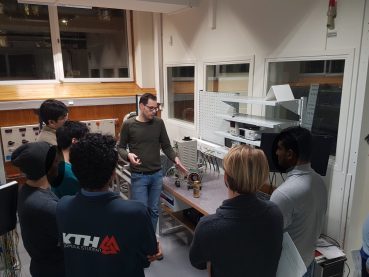What is it like to study for a PhD? This question probably has as many answers as there are doctors and PhD students. But in most cases, you will hear that it is a lot of work and many hours of diligent struggle. So research is tedious, you conclude.
However, working towards a PhD at a Swedish university includes much more than just conducting your own research. For sure, keeping up with the current research in your field, setting up experiments, testing out ideas in simulations, presenting your research, and other research related tasks comprise the bulk of the work load (it should make up 60 % of the time, according to the formal study plan that all PhD students set up). So what about the rest?
Let’s peak at my own schedule for Thursday and Friday last week. Although not being two typical days, they gives a pretty good indication about the average (how about that, do you remember your stats course?).
On Thursday, I went to Västerås to conduct experiments with a colleague who is carrying out an industrial PhD at ABB. We had a fairly rough start when realizing that the current sensors where picking up an awful amount of noise. Such intermezzos are almost commonplace when conducting experiments and something you learn to live with. Once solved, we could both run the experiments and have a long a fruitful talk about the machine modelling. Keeping in touch and sharing knowledge with industrial partners is an important part of the PhD studies.
Friday morning – after a night with not too much sleep – I had an oral exam in a course on electronic system design. Much like the studies on undergraduate level, a PhD student continues to take courses throughout his/her five years. Supposedly, they should make up 20 % of the curriculum.

Having passed the exam, I scrambled to the power electronics lab at KTH, which right now is hectic with different laboratory exercises in undergraduate power electronics and machines courses. My role was now switched from student to a tutor. Those four hours in the afternoon make up part of my departmental duties, which constitute another 20 % of the curriculum. For most of my colleagues and myself, that means tutoring including correcting hand-ins, and preparing tutorials and labs.
So if you ever went into a university lab with the equipment prepared for your experiment, you now know – from this post and the last – who set up the bench.

